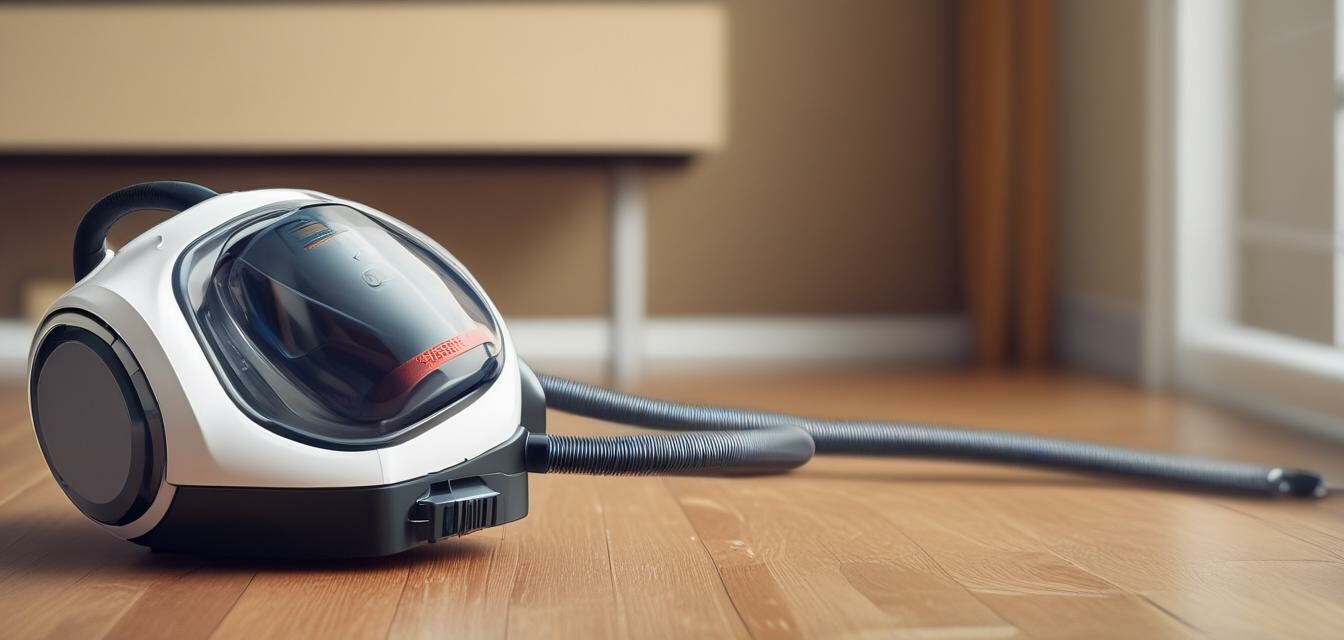
This article was generated using AI and is based on real customer reviews from the Amazon platform. It contains affiliate links, meaning we may earn a commission—at no extra cost to you. As Amazon Associates, we earn from qualifying purchases.
How to Maintain Your Bagged Vacuum
Key Takeaways
- Regular maintenance is essential for optimal performance.
- Change or clean the bag frequently to ensure suction power.
- Inspect and clean filters multiple times a year.
- Check for blockages and wear in the vacuum hose and attachments.
- Schedule professional servicing as needed.
Bagged vacuums are not just useful for cleaning; they also play a significant role in controlling allergens in your home. Proper and regular maintenance is crucial to ensure that your vacuum performs at its best. In this guide, we will explore essential maintenance tips that keep your bagged vacuum functioning effectively so you can maintain a healthier living environment.
Why is maintenance important?
Over time, dirt, dust, pet hair, and allergens can clog your vacuum and reduce its effectiveness. Regular maintenance can enhance its lifespan, ensuring consistent performance and efficiency. Here are some key reasons why you should keep up with maintenance:
- Improved suction power
- Reduction of allergens in your home
- Extended lifespan of your vacuum
- Cost savings on repairs and replacements
Essential maintenance steps for your bagged vacuum
1. Change the vacuum bag regularly
Changing the vacuum bag is one of the most significant maintenance tasks. A full bag can reduce suction power and efficiency, making it harder to pick up dirt and allergens. Depending on usage, bags should generally be changed when they are about two-thirds full.
2. Clean and replace filters
Bagged vacuums usually come with filters that help trap fine particles. Here’s how to properly maintain them:
- Check your vacuum’s manual to see if the filter is washable or needs replacing.
- Wash reusable filters under running water and let them dry completely before reinserting.
- Replace any filters that cannot be washed every 6 months or according to the manufacturer's recommendations.
3. Inspect hoses and attachments
Blockages can significantly impact your vacuum's performance. Regularly check the vacuum hose and attachments for:
- Dirt buildup
- Cracks or tears
- Blockages
4. Clean the brush roll
The brush roll directly impacts your vacuum's cleaning ability. Here's how to maintain it:
- Turn off and unplug the vacuum.
- Remove the brush roll carefully.
- Use scissors or a seam ripper to cut away any tangled hair or fibers.
- Wipe the brush with a damp cloth.
- Reassemble the brush roll once you’re done.
5. Schedule professional servicing
While you can perform many maintenance tasks yourself, it’s wise to schedule a professional servicing once a year. This ensures deeper cleaning and repairs that might be difficult to handle alone.
Understanding common issues
| Common Issue | Possible Causes | Solutions |
|---|---|---|
| Poor suction | Full bag, clogged hose, dirty filters | Change bag, clear hose, clean filters |
| Strange noise | Blocked brush, worn belt | Inspect and unclog brush, replace belt |
| It won't turn on | Power cord issue, motor failure | Check power cord and replace if necessary; consult technician |
Additional tips for maintaining your bagged vacuum
Pro tips:
- Store your vacuum in a dry area to prevent moisture damage.
- Avoid vacuuming large debris that can clog the vacuum.
- Always use high-quality vacuum bags that fit properly to prevent leaks.
- Familiarize yourself with your vacuum’s user manual for specific maintenance instructions.
Conclusion
Regular maintenance is essential for your bagged vacuum to ensure optimum performance and allergen control. By following the steps outlined in this guide, you’ll not only prolong the life of your vacuum but also create a healthier living environment. For more information on different types of vacuums, check our bagged vacuums page and discover which model suits you best.
Pros
- Enhanced suction with proper maintenance
- Affordability of replacement bags
- Reduces allergens effectively when maintained
Cons
- Ongoing cost for replacement bags
- May require more frequent maintenance